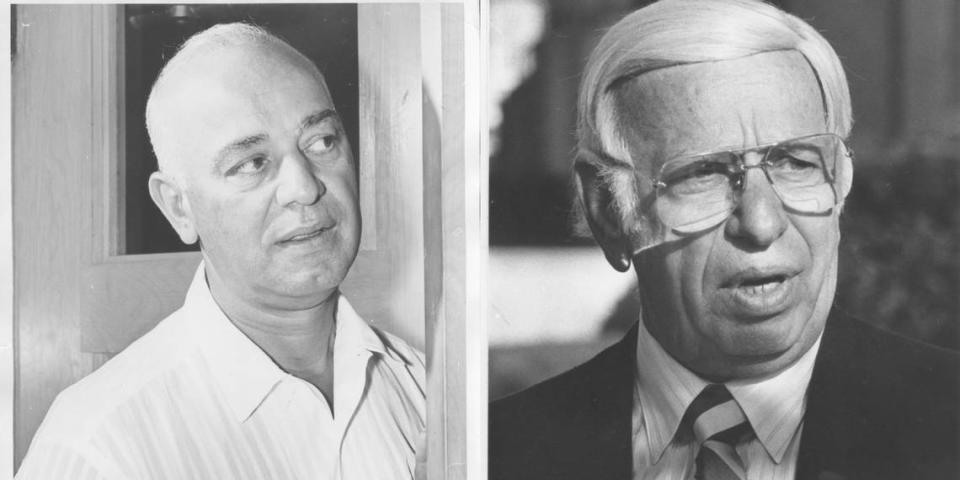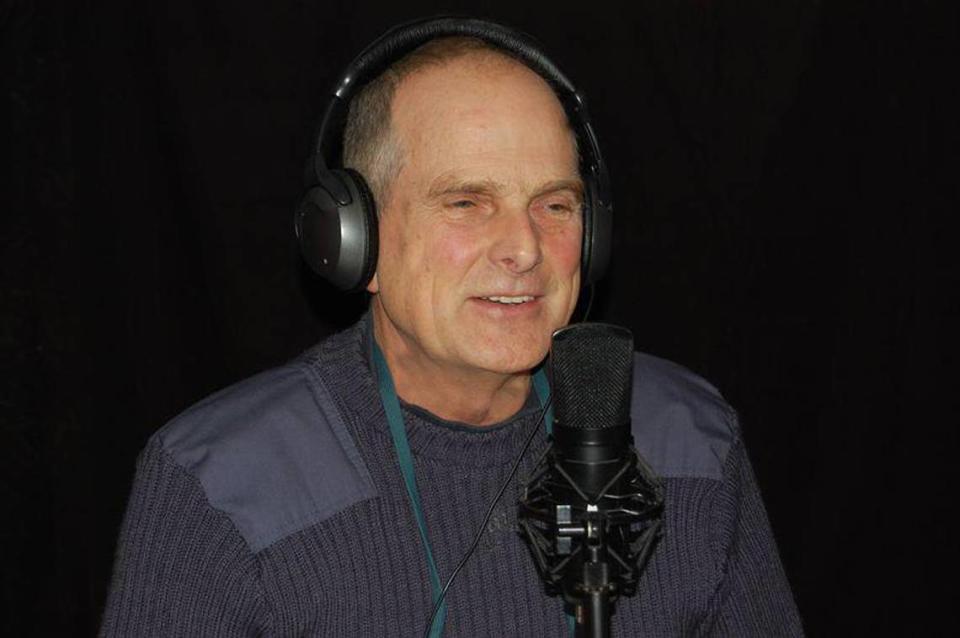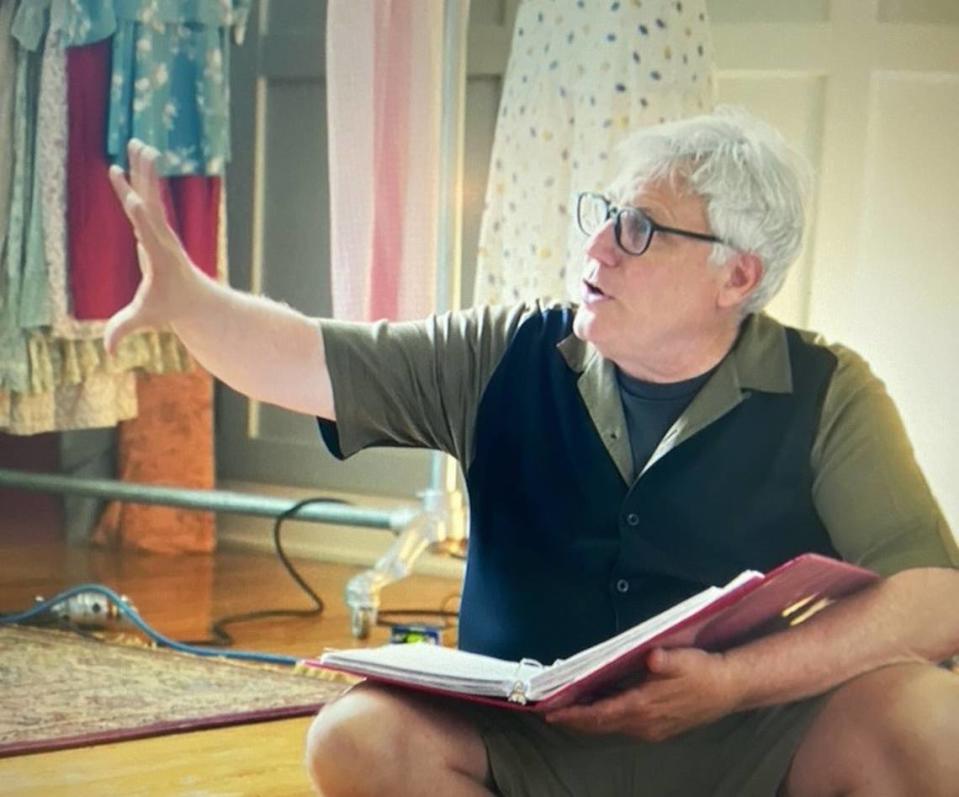Kansas City mafia loved to eat at this Italian restaurant. Until the FBI bugged it
Uniquely KC is a Star series exploring what makes Kansas City special. Are you feeling nostalgic for a Kansas City area restaurant that closed years ago? Share your memories, and we may write about the place in a future story.
In June 1978, a man with powder-white hair stepped out of the darkness and into an Italian restaurant.
Carl “Cork” Civella slid into a seat at his favorite restaurant, Kansas City’s Villa Capri, and blinked at the man sitting across from him. From the other side of the table, Carl “Tuffy” De Luna muttered softly.
“Yeah, I told that guy you and I was gonna come, an’ he says, ‘Wait!’”
Under the dim light, the two murmured about “that place” and “the guys,” intermingling English and Italian. Their voices were soft, hard to catch at times.
“Before, don’t you think before the thing’s comin’ up he should check with the Teamsters, see if they know he’s, he’s goin’ to, you know,” Tuffy said, shooting a knowing glance.
“He must not have,” Cork replied.
Unbeknownst to the mobsters, FBI agents in a separate location leaned forward in their seats, listening intently as the reels of a tape recorder spun.
Here we go, they must have thought with arched eyebrows.
It was that hushed conversation in Villa Capri that ultimately led to their imprisonment and demise. The Civella family was a notorious name in the city at the time. Several members of their outfit are linked to bombings, shootings and all sorts of mayhem.
Their ill-famed leader, Nick Civella, was behind bars during the Villa Capri incident. But his brother — Cork — and Tuffy eagerly continued pocketing unreported casino earnings for the group.

Gary Jenkins, an ex-Kansas City police detective, recently offered a grainy photograph of the restaurant on Independence and Prospect avenues. The old Villa Capri has since been razed, but his memories stand strong.
The bugging was the culmination of years of surveillance, where police officers and FBI agents looked on secretly as the mobsters flowed in and out of the restaurant.
“They liked to go to a place they felt comfortable, and they felt comfortable at the Villa Capri,” Jenkins said. “There wasn’t anything magical about it, just the place they started going. Especially at night.”
A month before the bugging operation, Myron “Andy” Mancuso of the rival Spero gang was seen meeting with Cork at the Villa Capri. Hours after Mancuso left the restaurant that evening, his body was found less than 100 yards away, slumped over in the front seat of his car.
He had been shot twice in the head minutes after forking down his meal. The River Quay mob war of the late ‘70s had claimed another victim, and the Villa Capri appeared to play a small part.
Jenkins, who became a detective in 1978, helped the FBI monitor the mafia men. Today he recounts all his harrowing mob tales on his podcast, Gangland Wire.
“What we did with the intelligence unit back then is, they needed bodies to help run surveillance … trying to keep up with their phones and where they were,” Jenkins said. “Just following them around is basically what I did.”

Perhaps, the FBI thought, they’d find their smoking gun at the Villa Capri.
That June, agents knew they couldn’t simply walk in, order pizza and listen from a neighboring table. Armed with the information given by an informant, the FBI issued a warrant to hide microphones in the back two tables.
Cork and Tuffy had some awareness that they were being watched, said mafia documentarian Terence O’Malley. Clearly, though, they were undeterred from conducting business in public.
One has to wonder what Ross Strada, owner of Villa Capri, thought at the time. A bookie, Strada was known to be friendly with the Civella family. One of the conditions of probation for Strada’s bookmaking charge in 1974 was to avoid contact with them.
“The way I understand it is (the Strada family) knew what was going on, and they actually … told the Kansas City outfit, ‘You guys gotta be careful,’” O’Malley said. “What (the Civella family) probably thought was, ‘We’re not doing anything illegal ostensibly.’”
Before the FBI handed down an indictment, agents listened in for 30 days and pieced their conversations together. Reading a transcript from the June conversation, it’s nearly impossible to pick up on specifics.
But FBI agents had all the context they needed. They went into the operation hoping to find more information about the murders in the River Quay (now known as the River Market), but listening in, they heard the mobsters discussing skimming millions of dollars from casinos in Las Vegas.
“The Villa Capri was really the linchpin to bringing down the mafia as it was in Las Vegas in the 1970s and 1980s, specifically related to Cleveland and Milwaukee and Chicago,” said O’Malley, who created the book and film “Black Hand Strawman” about the KC mob. “Had there been no conversation at the Villa Capri, who knows how long that would have been going on?”

The conversation launched “Operation Strawman,” a five-year-long FBI probe aimed at eradicating mafia control of Vegas casinos.
The pair left the diner, with no idea that they’d just handed the FBI the evidence that would bring them down.
Tuffy and Cork were indicted in 1983 and accused of illegally collecting $2 million from casinos. Thirteen others were named in the indictment..
While the mob’s favorite Villa Capri location has been gone for years, the restaurant group itself has only been out of commission since last year, when the Overland Park spot closed.
Vincent Scudiero opened the first Villa Capri in 1959 at 4709 Troost Ave. A relative, Anthony Scudiero, opened one in Overland Park in 1961, which moved decades later to 10412 Mastin St.
At its height, Villa Capri had five locations.
Anthony’s son, Steve Scudiero changed the Overland Park restaurant’s name to “Steve’s Villa Capri” in 2014. Steve had taken over ownership a few years before. (But of course, the Overland Park spot was never a mob favorite like its sister restaurant.)
Villa Capri’s best known dish was its “Special Pizza” with Italian sausage, pepperoni, hamburger, green pepper, mushrooms and onions, topped with housemade sauce, provolone and mozzarella.
What entree did Cork and Tuffy order the day their multimillion-dollar operation began to unravel? Perhaps that’s a mystery lost to time.
“It was not uncommon for those who were engaged on a daily basis in organized crime … to have a number of friendly bars and restaurants,” O’Malley said. “I think the Villa Capri had excellent food … and they were always welcomed.”
Are you feeling nostalgic for a Kansas City area restaurant that closed years ago? Share your memories by emailing Jenna Thompson at jthompson@kcstar.com and we may write about the place in a future story.

